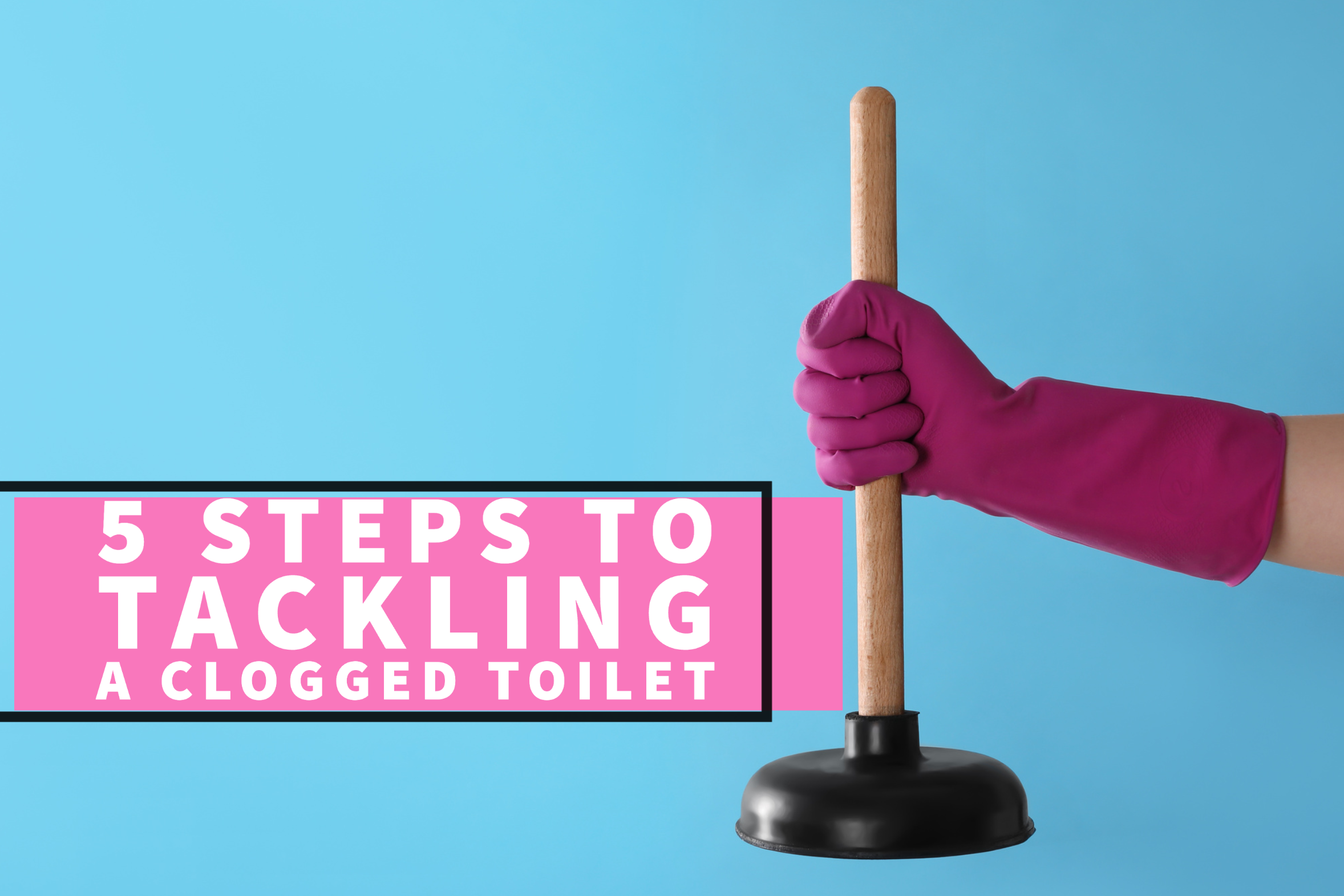Have you ever been in a situation where you used the bathroom and then proceeded to flush the toilet only to be greeted by an uninvited toilet clog? On top of that, the water level starts rising alarmingly fast. What do you do? How can you stop it? It’s probably safe to say that most of us have been in a similar scenario. (It happens to the best of us!) Keep in mind that if your toilet is clogged and toilet water is about to be strewn all across your bathroom floor, there’s not much you can do to halt this process altogether. So, panicking will not prove helpful. However, there are a few tips and tricks you can apply to help lessen the chaos, minimize water damage, and rectify the issue.
So, if you’re dealing with a bathroom floor flooded with toilet water, don’t worry! Take a deep breath and follow the steps provided by your favorite Huber Heights Plumbing & Drain experts!
Step 1: Shut Off the Water Valve:
If you are dealing with a toilet blockage, the first thing you should do is find the toilet’s water shut-off valve. It’s often situated behind the toilet and looks like a football-shaped knob. Turn it clockwise to turn off the water. Remember not to flush the toilet again until everything is resolved and functioning again.
Step 2: Seal the Flapper Closed:
As an extra layer of assurance, to stop water from entering the toilet bowl, you can also check on the rubber flapper in the tank. This rubber piece covers the tank’s drain and prevents the water from automatically flowing into the toilet bowl unless the flush handle is activated. You should see a metal lever or chain that connects to the flush handle. Once you have located the flapper, gently push down on the rubber piece to ensure it is properly sealed.
Step 3: Tie Down the Float:
This next step is another precautionary step. You can also find the float cup (or ball) in the tank and immobilize it to prevent it from moving. To prevent the toilet tank from refilling with water, find the float cup or ball located in the tank which controls the water level, then secure it accordingly.
Step 4: Remove the Excess Water:
Well done! You’ve made great progress, but the job isn’t finished yet. Next stop – clean up! But first and foremost, it’s important to prioritize safety and hygiene. So, if you have some available, we highly recommend using them if possible. Start by carefully picking up any solids/waste that may have overflown onto the floor and putting them into a garbage bag. (Don’t forget to take the trash out ASAP when all is said and done!) Next, in order to avoid the toilet overflowing after it is fixed, it is important to first remove the water from the overfilled toilet bowl. As the toilet is not draining, it will need to be manually removed. You may use a bucket or container to scoop the excess water from the toilet bowl and pour it directly into the bathtub or sink.
Lastly, water damage is a real thing. So, it’s important to think about your floors. If you happen to have a wet vacuum, now is a great time to utilize it. Furthermore, if you have solid floors, use materials like towels, rags, a mop, or paper towels to clean up the overflow. For spills on carpeted areas, place towels flat on the carpet and add a heavy object on top of them to absorb the water. Make sure everything is absorbed as much as possible before moving on to disinfecting the flooring. On top of that, when you start the disinfecting process, don’t forget about all the areas that came into contact with the toilet water. For example, the baseboards, bases of the counters, cabinets and sink, toilet bowl base, bathtub, and bathroom trashcan.
Step 5: Take Care of the Blockage:
Now onto the culprit of it all – the clog! Grab ahold of your plunger and position it over the drain at the bottom of the bowl, making sure it is fully covered by water. Then, use the plunging motion to clear the blockage. At this point, the clog should neutralize, and your toilet’s water should once again drain again. However, if the clog persists, it may be time to contact a professional. If you have tried to unclog the toilet several times with no luck, feel free to reach out to us for assistance. We’re here to help!
And before we forget, if your toilet is, in fact, up and running again, don’t forget to readjust everything back into its original place, put the tank cover back on your toilet, and turn the water valve back on as well!
Call Huber Heights Plumbing & Drain today at (937) 764-3381, or schedule an appointment online now by clicking here!




